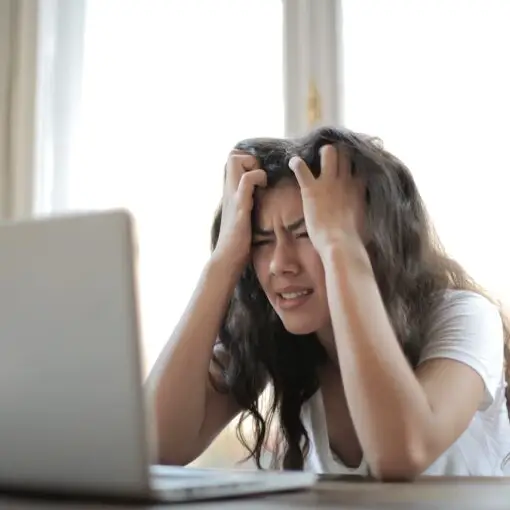In the digital age, we are presented with information from all scopes and spectrums. In order to understand the meaning behind texts, critical reading and critical thinking are two techniques important to use. But what are critical reading and critical thinking, and is there a difference?
Critical reading is a technique used to read texts actively, absorbing deeper meaning rather than just surface-level information. Critical thinking happens after the reading. It is a technique that is used to reflect on the information we are absorbing from texts in order to decipher the author’s meaning and form your personal thoughts and options in reaction to it.
Together we will explore the difference between critical thinking and critical reading and learn how to effectively use both strategies together to evaluate texts and form unbiased opinions about them.
Critical thinking and critical reading – is there a difference?
Though these two work well in tandem, it is still important to think of these two learning strategies through different lenses. Critical thinking can only take place after your critical reading; you cannot form opinions or make judgments on an author’s point of view unless you fully understand the text. The only way to do that is to use critical reading skills.
Critical thinking is used to evaluate ideas and information. With critical thinking skills, you decide what you accept or believe about a given topic. Critical reading, on the other hand, takes place during the act of reading. This includes several strategies for discovering what the actual information and ideas are in the text, so you infer the opinions, biases, and deeper meaning behind the author’s words.
Critical reading and critical thinking work in harmony to get a better grasp of the information we are taking in. We must remind ourselves of the merits of each text, despite our personal agreement or disagreement. We must go into reading new texts without our own biases so we can learn something new and understand different perspectives.
After we are done reading without our own opinions muddying the information, we can then use our critical thinking skills to accept or reject what the piece is dishing out. This is the only way we can understand others’ views and opinions, as well as give them respect.
What is someone who doesn’t read and think critically?
Non-critical thinkers take a passive and simplistic view of the world. If you’ve ever known someone to overly rely on the phrase, “it is what it is,” then you know someone who isn’t thinking critically! They tend to see things in black and white or good and bad rather than looking deeply into any given issue.
People who are not critical thinkers see the world from an egotistical lens. They believe their facts are the only important ones, believe their perspective is the only one that makes sense, and that their goals are the only ones worth pursuing.
Critical Reading tips
To someone who is simply reading in a non-critical manner, they can understand what a text says and regurgitate the information. Critical reading is actively reading instead of simply absorbing the information presented. Also consider who the writer is, what type of text it is, and who is publishing the piece.
To take read critically, understand the author’s purpose, form your own options about the piece, and evaluate the piece, we must follow three steps to analyze to work:
- Restatement – understand what the text is saying by restating the key points
- Describe – Discuss what the pieces are actually doing
- Interpretation – analyze the work as a whole to define the author’s purpose, opinions and biases, and tone
Non-critical readers can look at a text and tell you the general idea of what it is saying instead of telling you what the author is doing with the text. Here are some ways to better read critically:
- Highlight important parts
- Summarizing sections in your notes
- Breaking down the author’s purpose by paragraph
- Brainstorming your opinion
- Reflecting on the author’s point in your own writing
Reading critically takes energy and patience, but taking the steps mentioned above will ensure the text read is coherent and consistent, so we can evaluate it for ourselves.
Critical Thinking tips
Critical thinking is the next step after critical reading. Once you understand the author’s purpose, biases, and tone, it is time to insert yourself into the equation. Think about what assumptions, experiences, perspectives, and knowledge you bring to the table. At that point, you can evaluate whether the author’s point, opinion, or meaning is true and whether you agree with it.
In order to break down a text to evaluate them, here are some tips for critical thinking:
- Focus on reason instead of emotion
- Require and evaluate the evidence presented
- Recognize your own point of view and biases
- Be open to different points of view and inferences
- Avoid judgment and assumptions
- Be skeptical
Critical thinking also includes really difficult steps, like evaluating the evidence presented. This may require further research in order to weigh the validity of opinions. Some authors may only present one side of the evidence or use biased sources. We want to understand different people’s points of view, but we should only believe what is true.
One of the most difficult and important parts of critical thinking is keeping an open mind. In order to create a more accepting world, we should be able to give credit to things that clash with our own beliefs if there is solid and substantial evidence to prove it. We should not rely on the popularity of views, but only accept explanations that provide proper arguments and evidence.
Final thoughts
Critical reading cannot happen without critical thinking and vice versa. Critical reading and critical thinking are two techniques that allow us to get into the mind of others; what is this author trying to tell me? Why is it important to him or her? Using these strategies can help garner respect among people with opposing opinions, which is essential in bringing together a divisive world.
References
https://www.stetson.edu/other/writing-program/media/CRITICAL%20READING.pdf
http://www.criticalreading.com/critical_thinking.htm





